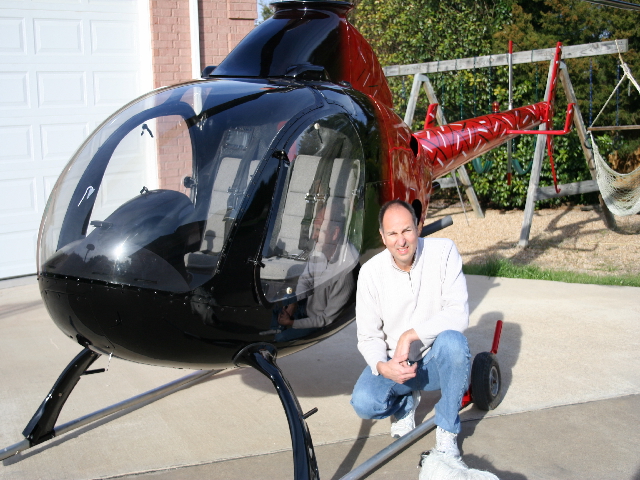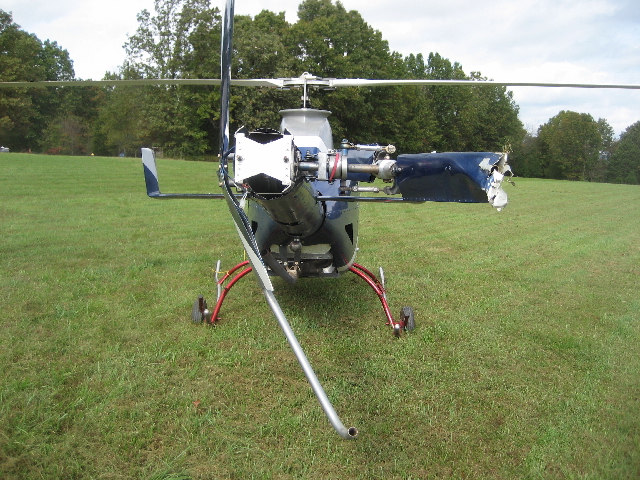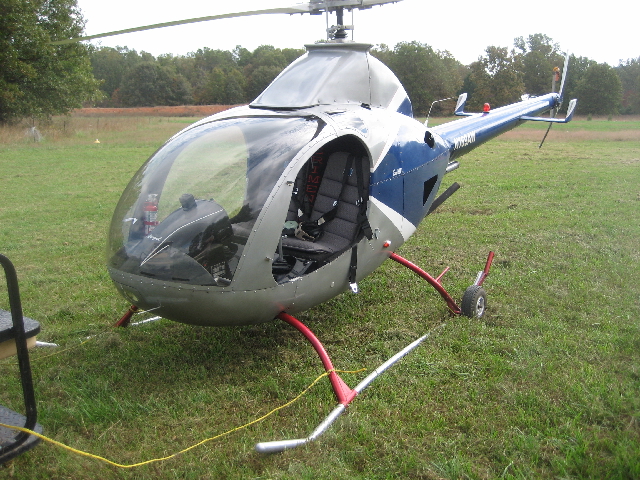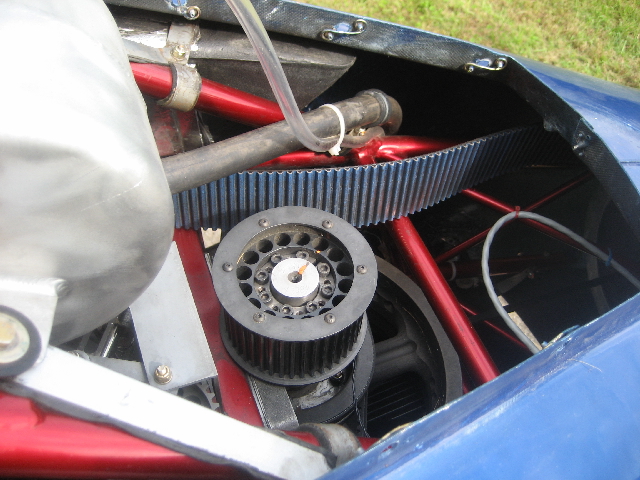 |
ARTICLES |
One More Thing to Work On
Cog Belt Break
In my previous article that appeared in the November issue of EH, I made the following statement: “I would like to state that this year I have had fewer in-flight failures than in any of the past 10 years.” Up to the time that I wrote that article I had experienced one engine failure due to a valve rocker falling off of the valve and push rod (this has been about a once a year event for me and is an issue that we solved in the new VPHelo, LLc engine that we are now testing. NO MORE VALVE ROCKER FAILURES!!!!!!!
In the case of that engine failure I was able to auto the helicopter safely to the ground, we had a short walk back to the hangar to get some tools, repositioned the rocker and adjusted the valve lash, and then continued my student’s flight training.
I experienced another engine failure this year while instructing in Texas when the crank sensor failed. The FADEC computers faulted from FADEC 1 to FADEC 2 which activates the secondary fuel injectors in the manifold. This a not the best design because the engine can only run for a short time on these secondary injectors before the spark plugs foul with carbon to the point the engine looses power and quits.
In this instance I was with my phase 2 student Mike Sidler as we turned final for an approach to a hover over a very muddy area about a mile from the airport, in fact, everything in that area of Texas was muddy with standing water due to the recent rains. When the computers faulted to FADEC 2 I told my student that I was going to try to make it back to the airport where the ground was firm so that we would not have to try to find a way to recover the helicopter from the mire we were over. All I could think of was trying to convince a farmer to let us tear up his pastures as we would attempt to traverse his property with recovery vehicles.
Knowing that I had about 500 feet of altitude and a mile to fly to get to the airport where there was some firm ground, I thought that my student and I had a good shot at making it there safely. As we neared the airport the engine began to run progressively rougher as the spark plugs were getting fouled up with carbon. I kept the ship over open areas for the inevitable autorotation that I knew I would need to execute at any time.
The extremely rich mixture of the FADEC 2 injectors was causing quite a reduction in the engine power. I needed to maintain 70 mph so we continually lost altitude as the airport area got closer. By the time we were adjacent to the taxiway of the very busy airport where Mike’s ship is based, I informed him that we would keep the ship over the grass next to the taxiway so that when we set down, we would not block the taxiway. By this time we were down to about 100 feet AGL with full throttle, and descending.
Mike was ready, I told him to let me have all of the controls because we were about to run out of engine power as we neared our intended landing spot. We were just about 100 yards from our normal landing area when the engine coughed and died. At this point we were about 30 ft. AGL and still traveling at around 70 mph airspeed. Mike and I had been practicing quick stops for the past few days so I informed him that we were going to just do one now. We were all set up, proper altitude, proper air speed, extended reinforced front skids with flipped front landing gear bow, what more could we ask for (other than an engine system that would not be so prone to failure)?
When the engine quit, all that was needed was to drop the collective, haul back on the cyclic for a nice 70mph flare, settle, level the ship, and slide it onto the soft grass that borders the taxiway, very nice and really not a big deal if you are all set for it. Following the rotor spin down, we walked to the hangar, which was just about 100 yard further than we would have had to walk if we had made it back to our intended landing spot. We got his car, a rope, the ground wheels, and returned to the helicopter. In a few minutes we were pulling the ship down the taxiway to the hangar.
It took a few minutes to isolate the problem, one of the crank sensors had failed. Mike called Rotorway and Robin sent a new set to us by overnight currier. The next morning we had the new crank sensors, installed them, and continued Mikes training with over 200 autorotations (practice ones only as his ship flew flawlessly from then on). Mike told me that those autos now had new meaning seeing that if done correctly, and if equipped with the proper landing gear and skid configuration, a touchdown autorotation was not such a big deal or something to be feared.

I would like to add that if anyone is not flying with the longer aluminum skids with the steel reinforcement on both sides, they need to check out the VPHelo, LLc web site at http://www.vphelo.com . Andrew is making very nice skids with stainless steel skid shoes and to date we know of at least 6 ships that have been saved by the owner installing these extended skids.
The new VP engine also has shaft-mounted roller rockers that cannot fall off of the valves and two redundant fadec computers that both operate identically and at the same time. This way if one computer fails, the second one continues to run the engine with no interruption or change, and the pilot gets a warning light to indicate that he is now flying on only one computer. VP has also eliminated the secondary fuel injectors that foul the spark plugs. Once the VP engine is ready for public use, we will be presenting it here in Experiemental Helo magazine.
Only days after writing the November article I was flying with a student here at my training center in Missouri. He was beginning his phase one flight training and was very excited to begin practicing autos. As we were beginning our take off from my helipad, we were accelerating through about 10 to 12 mph and were about 5 feet skid height when all at once the engine raced, the ship did an immediate rotation to the right and dropped. This one was a real surprise and happened in a hear-beat.
I informed Larry “I have it” at which time he let go of the controls. Larry had just installed the extended reinforced skids with the front gear leg reversed and it was what saved the ship. As the ship dropped and the spun 90 degrees to the right, chopped the throttle, applied full up collective, cyclic opposite to the direction that we were traveling, and full left anti-torque pedal. The helicopter dropped onto the front of the left skid, where the stock skid will snap off, and pivoted around to the 180 degree position of our original take off direction of travel.

We were then sliding backwards and the ship rocked back onto the tail rotor and slid to a stop. We surely would have rolled over had it not been for the extended reinforced skids which allowed the ship to pivot the 180 degrees to where the tail boom acted as an outrigger preventing the ship from rolling over backward.
Upon inspection we found that the new factory cog belt with only 21 hours on it had snapped. This was the first instance of a ship equipped with the tensioned cog drive that I was aware of the cog belt breaking. When the belt broke, the power to the main rotor was disconnected so all of the engine power went to the tail rotor, snapping the nose of the ship 90 degrees to the right. We were very fortunate to have not experienced a rollover but we sure came close.

I have included several photos of Larry’s ship following the belt break. There is some damage but not nearly as much as would occur from a rollover. The belt manufacturer engineers stated that the break was most likely from the belt being run with too little tension allowing the cogs to ride up the driving cog wheel which can hyper extend the reinforcing fibers causing a belt failure. This may happen when the engine is starting but there is insufficient oil pressure to properly tension the belt until the engine is running.


Shortly after this incident I received a call from Bruce in Main. He told me that the exact same thing happened to his AP cog drive belt as he was in a hover and setting down. He told me that the hard set down also damaged his ships tail rotor and tail boom as well as the landing gear and skids but he was also able to keep the ship upright.
Once again, Andrew at VPHelo, LLc is working on a solution to the potentially dangerous problem and we will publish his findings when they are complete. As always, only fly your ships over areas that are safe to auto into. If this should happen at altitude, it would give the pilot more time to get to the ground safely with no damage.